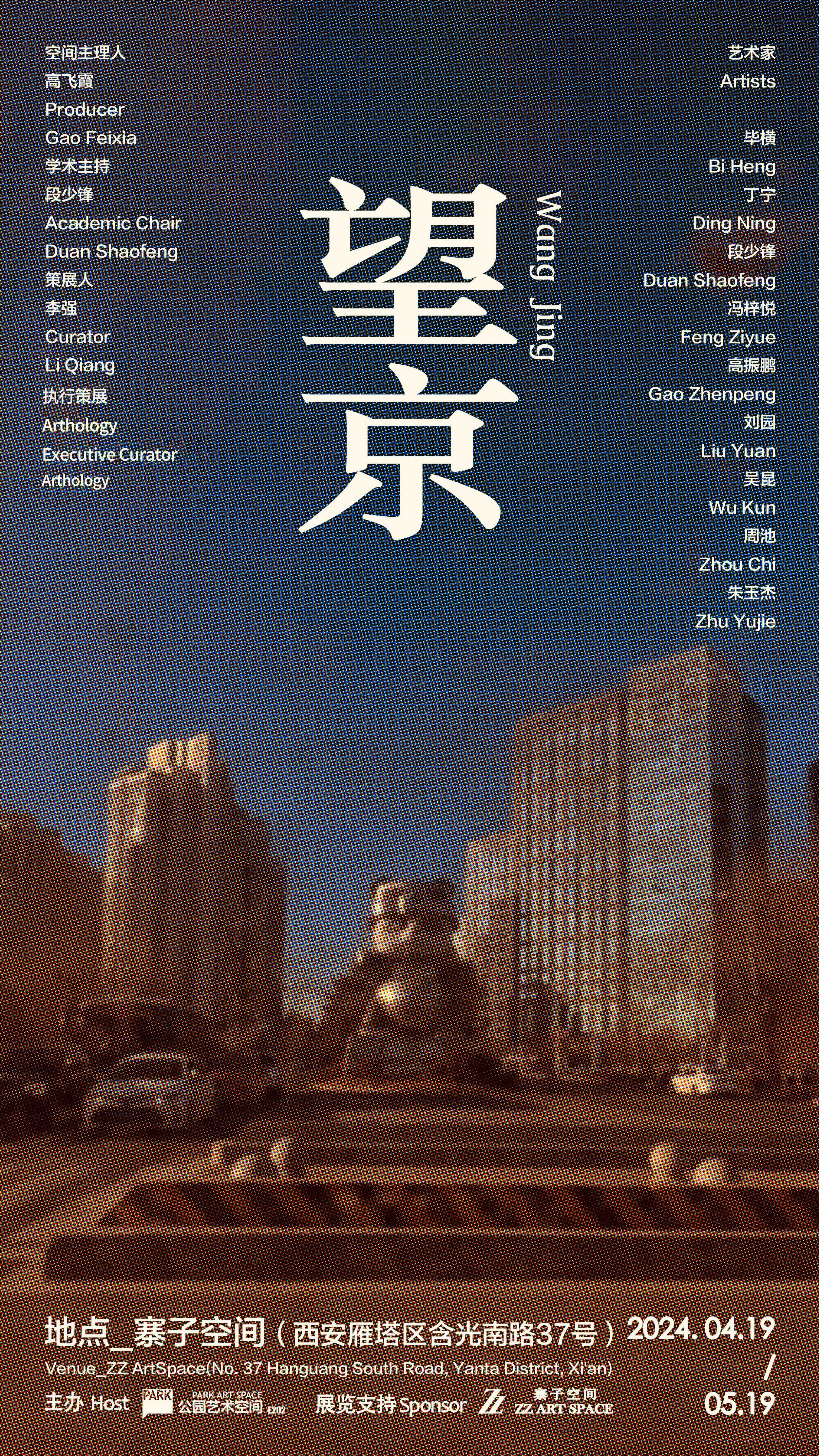Wang Jing
Wang Jing 望京 Group Exhibition of Xi'an Artists
Date: 19 April - 19 May 2024
Venue: ZZ Art Space, 37 Hanguang South Road, Xi’an, China
Producer: Feixia Gao
Curator: Qiang Li
Executive Curator: Fan Shi
Academic Chair: Shaofeng Duan
From April 19 to May 19, 2024, Arthology continued its commitment to regional curatorial exchange through the exhibition “Wang Jing” (Looking to Beijing), held at Zhaizi Space in Xi’an. This project was conceived as the second half of a two-part initiative between Park Art Space (Beijing) and Zhaizi Space (Xi’an), following the successful staging of Looking to Chang’an in Beijing earlier that month. Together, the two exhibitions form a dynamic model of intercity collaboration between independent artist-run spaces.
“Wang Jing” is more than a geographic reference to a well-known district in Beijing. For many artists in the exhibition, it also represents a memory site — one tied to their early creative formation, their encounters with the Central Academy of Fine Arts, and the now-shifting cultural fabric of northeast Beijing. Curated by Li Qiang, with Arthology serving as Executive Curator and Duan Shaofeng as Academic Chair, the exhibition brought together ten artists, each contributing a unique lens on urban life, migration, memory, and belonging.
Featured artists included Bi Heng, Ding Ning, Duan Shaofeng, Feng Ziyue, Gao Zhenpeng, Liu Yuan, Wu Kun, Zhou Chi, and Zhu Yujie. Their works ranged from archival documentation and narrative painting to conceptual installation and poetic reflection. Together, they explored Beijing not as a monolithic capital, but as a shifting field of personal geography — one marked by migration, urban redevelopment, cultural dislocation, and quiet observation.
Through site-responsive presentation at Zhaizi Space — itself located opposite Xi’an Academy of Fine Arts — Wang Jing invited viewers to engage with the complexities of localness and displacement. What does it mean to remember a place while standing in another? How do individual memories of Beijing resonate when presented in the ancient city of Chang’an?
For Arthology, this exhibition continues our mission of facilitating interregional resonance through grassroots infrastructure. As the second part of our collaboration with Zhaizi Space, Wang Jing demonstrates that independent spaces can serve as living archives — not just of works, but of shared experience and cultural movement.
We hope this cross-city curatorial dialogue is just the beginning of many such exchanges to come.











